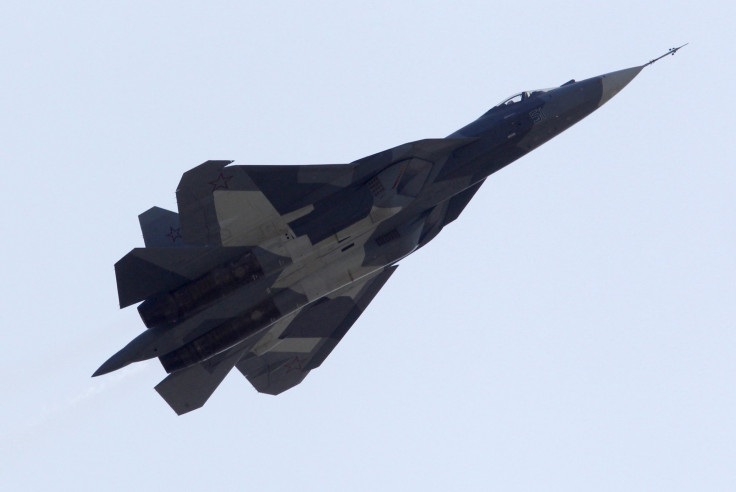Russia Unveils 6th Generation Fighter Jet Designs To Compete With the US

Russian military designers presented the first blueprints for a sixth-generation fighter jet Wednesday that they say will be ready for service around 2025, even though the Kremlin’s PAK FA fifth-generation fighter jet is not yet in service. Moscow is being pushed into action by the United States, which has been operating the F-22 Raptor stealth fighter jet for more than 10 years and began making plans for its own sixth-generation fighter jet in 2012.
"They have really come up with the designs for the creation of the sixth-generation fighter," Deputy Prime Minister Dmitry Rogozin told reporters after a meeting on military aviation development, according to Tass, a Russian state news agency. "I’m referring to new design concepts briefly presented by the Sukhoi design bureau and by the general designer appointed for all aircraft systems and armaments.”
The sixth-generation aircraft is expected to incorporate many of the same weapons programs and advanced stealth as it predecessor, but is likely to have manned and unmanned versions, said a Russian commander who also spoke with Tass.
The race for air superiority had heated up in recent years, since Moscow began a $700 billion, 10-year defense modernization program designed at achieving parity with the U.S. military. While it’s clear that Moscow is unable to spend as much as Washington on defense, setting aside $52 billion in 2016 compared with $575 billion by the U.S., it has generally been able to push out weapons, tanks, ships and submarines that compare favorably with American versions.
However, given the extreme costs and expertise involved with advanced jet fighters, Russia has always lagged behind. For example, Russia could never match the near $1 trillion costs involved in the development of the U.S. military’s F-35 multirole fighter. Its fifth-generation jet fighter, also known as the T-50, has experienced funding and operational issues that experts say will keep it far behind the F-22 and the F-35.
The T-50 is expected to come into service in the next year or two, with manufacture up to speed by 2020. However, disagreements with its partner country India over work and cost share, aircraft technology, as well as the number of aircraft to be ordered, could set the warplane back years. The two countries signed an agreement in 2010 to invest $6 billion each.
© Copyright IBTimes 2025. All rights reserved.






















